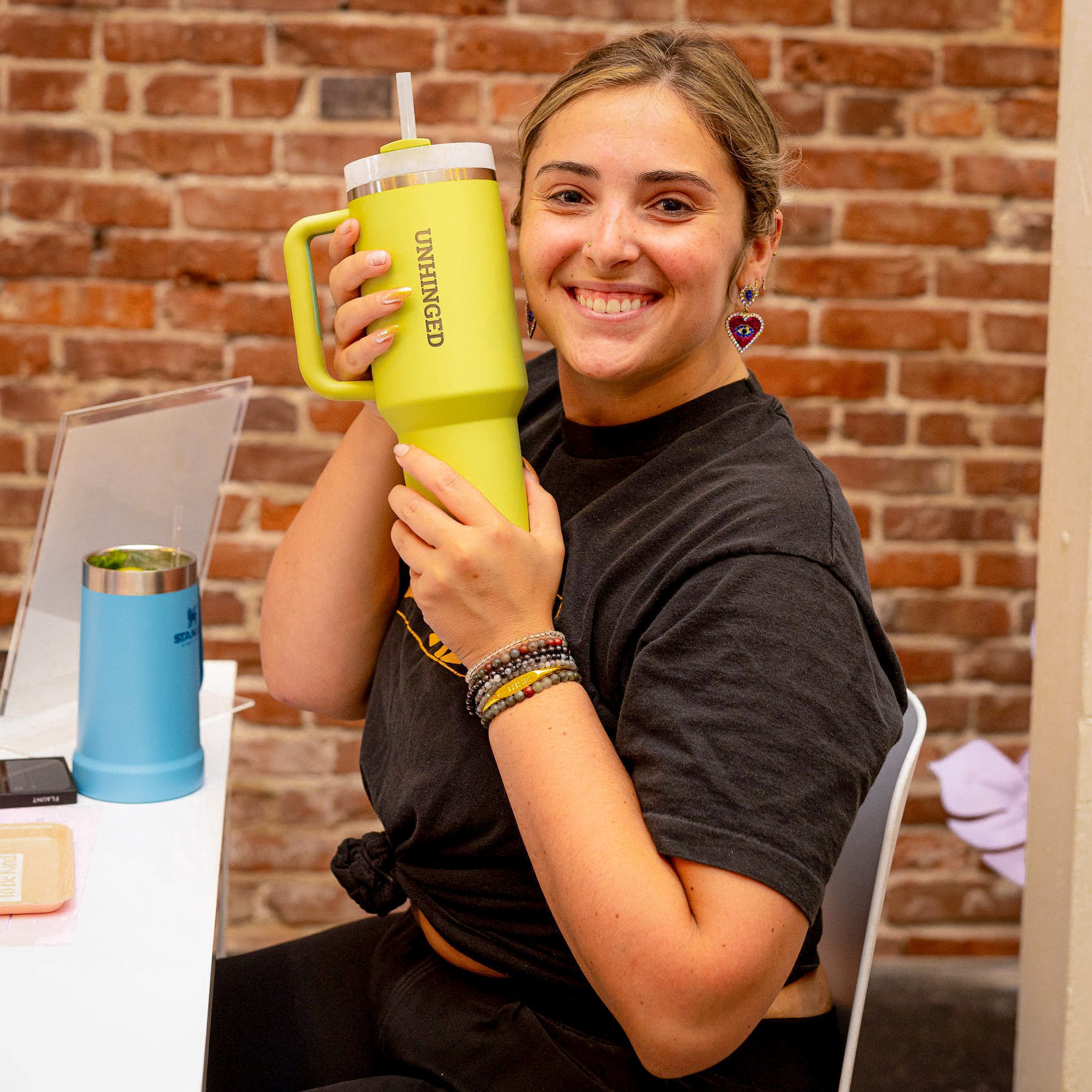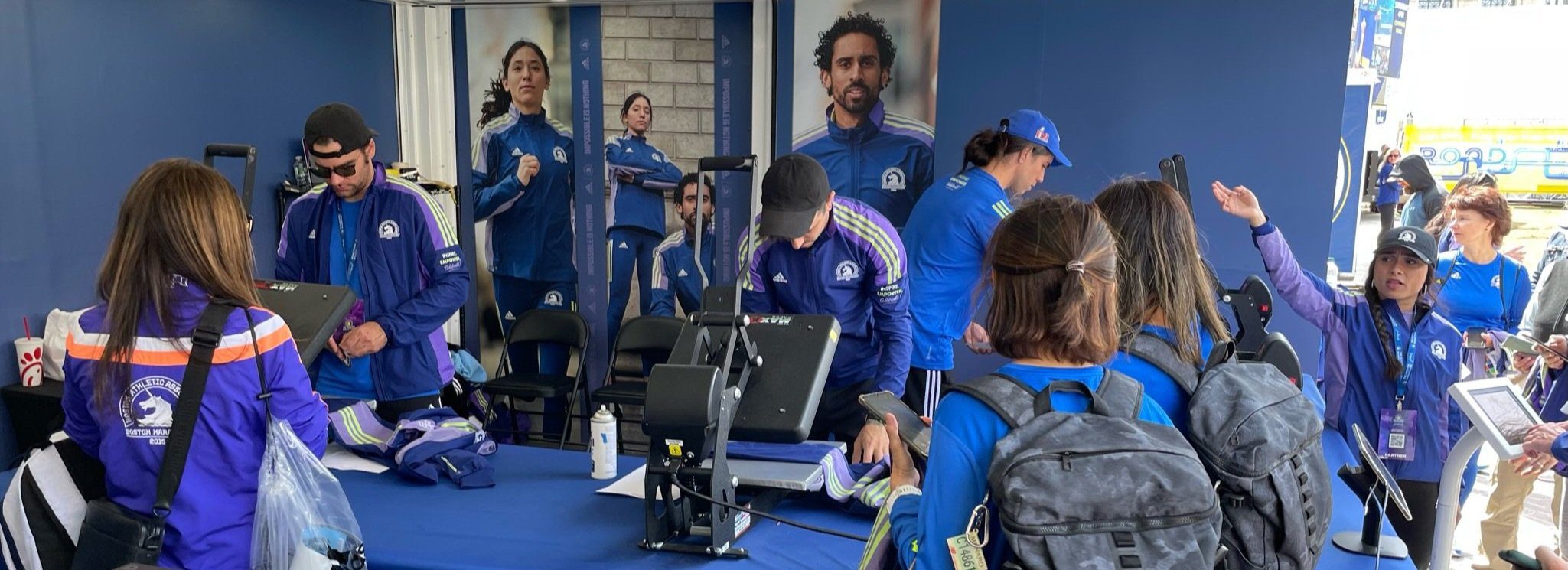In the world of event marketing, creating memorable experiences that engage the audience on a personal level is the key to a successful event. One of the strategies businesses are leveraging to achieve this is event merchandising. This approach is about more than just selling products or handing out branded materials at an event. It is an immersive marketing strategy designed to generate a memorable interaction between the audience and the brand. But what exactly is event merchandising, and how can it transform the customer experience?

Understanding Event Merchandising
Event merchandising is an experiential marketing strategy that involves creating and selling customized, branded merchandise during an event. The goal is not just to promote a brand but also to enhance the event-goer’s experience. It could be a music concert, a sporting event, a conference, or any occasion where people come together. This unique type of merchandising strategy focuses on on-site merch printing, creating a live, immersive brand experience that engages attendees and leaves them with a tangible reminder of their experience.
The Evolution of Merchandising in Events
How Merchandising Has Changed the Event Landscape:
Over the years, event merchandising has evolved from being a mere tool for generating additional income to becoming a strategic instrument to enhance audience experience, engagement, and brand loyalty. It’s the shift from selling generic products to crafting personalized items that reflect the event’s essence and align with the audience’s interests.
Personalization is Key!
With the advent of technologies that allow for quick, on-the-spot customization, personalized merchandise has become a key player in redefining the event landscape. Attendees no longer look for generic memorabilia; they seek products that resonate with them on a personal level and reflect their unique experience of the event.
In corporate events or trade shows, companies are shifting from handing out generic branded pens or notepads to giving away personalized items that the attendees find valuable. For example, a tech company may offer personalized USB drives containing content relevant to the sessions the attendees participated in or branded power banks customized with the attendee’s name, adding a personal touch to the brand interaction.
The evolution of merchandising in events underscores how brands are increasingly recognizing the power of personalization in driving deeper connections with their audience. As we move forward, this trend is likely to continue shaping the event landscape, making personalized merchandising a standard expectation rather than a delightful surprise.

The Power of On-site Merch Printing
One of the distinguishing features of event merchandising is the on-site production of custom merchandise. Rather than distributing pre-made items, businesses use on-site merch printing to create personalized items in real time. This live production process not only entertains attendees but also provides an opportunity to create unique, customized items that attendees can connect with on a deeper level. As they watch their chosen products being made, they become part of the creation process, enhancing their emotional connection to the brand.
The Art and Science Behind On-site Merch Printing
Crafting Unique Memories with On-Site Printing:
On-site merch printing takes personalization to a new level. It involves creating customized items right at the event, turning the process into a unique, interactive experience. This tactic doesn’t only yield tangible keepsakes for attendees, but it also gives them the chance to witness and participate in the creation process.
The concept of on-site merch printing is transforming the experiential marketing landscape. In its essence, it converges the realms of art and science to deliver unique, unforgettable experiences to event attendees. Unlike pre-printed merch, on-site printing offers real-time personalization, which carries a host of benefits.
Transform Event Attendees into Artists, Creators, and Product Designers
By offering on-site merch printing, event organizers are essentially inviting attendees to take part in an immersive, creative process. This act of co-creation not only provides a platform for the attendees to express their individuality but also makes each piece of merchandise a tangible representation of their unique event experience.
For instance, let’s look at music festivals. In the past, attendees would typically buy t-shirts with the festival’s name and the year. Now, they have the option to purchase merchandise that is unique to their experience. This could be a t-shirt personalized with their favorite band’s name, the date they performed, and even a catchy line from one of their songs performed during the event. This transforms the piece of merchandise from being just a memento to a keepsake that triggers a personal memory every time they see it or wear it.
The science behind on-site merch printing is equally compelling. Advanced printing technologies, like live sublimation and heat transfer printing, have made it possible to produce high-quality, customized items in a matter of minutes. This ensures that even in large-scale events, attendees won’t have to wait long to receive their personalized merch.
In essence, the art and science behind on-site merch printing work hand-in-hand to create engaging, memorable experiences for attendees. It’s a testament to how event merchandising has evolved, positioning itself at the intersection of personalization, technology, and experiential marketing.
Check Out Family Industries Event Experience Generator

Event Merchandising as an Experiential Marketing Strategy
Event merchandising goes beyond selling products; it’s about creating experiences. Brands can use this strategy to immerse attendees in a unique brand environment, foster interaction, and create memorable experiences. The personalized items serve as physical reminders of the event, prolonging the impact of the marketing message and keeping the brand fresh in attendees’ minds long after the event has ended.
Brands have been incorporating various experiential marketing strategies using event merchandising to create unforgettable experiences and foster a deeper connection with their audiences.
- Customized Merchandise Booths: At music festivals or comic cons, brands can set up interactive booths where attendees can create their personalized merchandise. For instance, the Converse brand had a “Design Your Own” booth at various music festivals, allowing attendees to customize their own sneakers with various prints and colors.
- On-the-spot Personalized Items: At tech conferences or business expos, companies can use on-site printing to create personalized items for attendees, like custom printed lanyards, badges, or even personalized souvenir license plates. These personalized items not only serve as a souvenir but also reinforce the company’s brand each time the attendee uses the item.
- Immersive Pop-up Stores: Pop-up stores in public areas or at specific events that allow people to personalize items on the spot can be a great way to create an immersive brand experience. An example of this was the Adidas at the US Open with customized bags for event attendees.

How Event Merchandising Builds Brand Affinity
Event merchandising can be a powerful tool for building brand affinity. When attendees have a positive experience interacting with a brand, they are more likely to develop a positive perception of the brand. Personalized merchandise can serve as a tangible reminder of this positive interaction, reinforcing brand affinity. Over time, these positive experiences and associations can lead to increased customer loyalty and advocacy.
- Engaging Attendees with the Brand: At events, attendees might not remember every detail about a brand’s booth or presentation. However, a personalized piece of merchandise serves as a tangible, long-lasting reminder of their experience with the brand. A company might distribute customized tote bags containing the event’s name, or personalized water bottles with the brand’s logo at a marathon event.
- Rewarding Customer Loyalty: Brands can also use personalized merch as rewards for loyal customers. For example, a brand could use on-site printing at an event to create exclusive, customized merchandise for VIP attendees, such as personalized t-shirts or hats. This strategy reinforces the brand’s appreciation for its loyal customers, further strengthening their brand affinity.
- Creating a Sense of Community: Companies can also use event merchandising to foster a sense of community among attendees. By offering merchandise that’s personalized around a shared experience or interest (like the date and location of an event, or a favorite band or speaker), brands can encourage a sense of camaraderie among attendees. This shared connection can foster a positive association with the brand and strengthen brand affinity.





